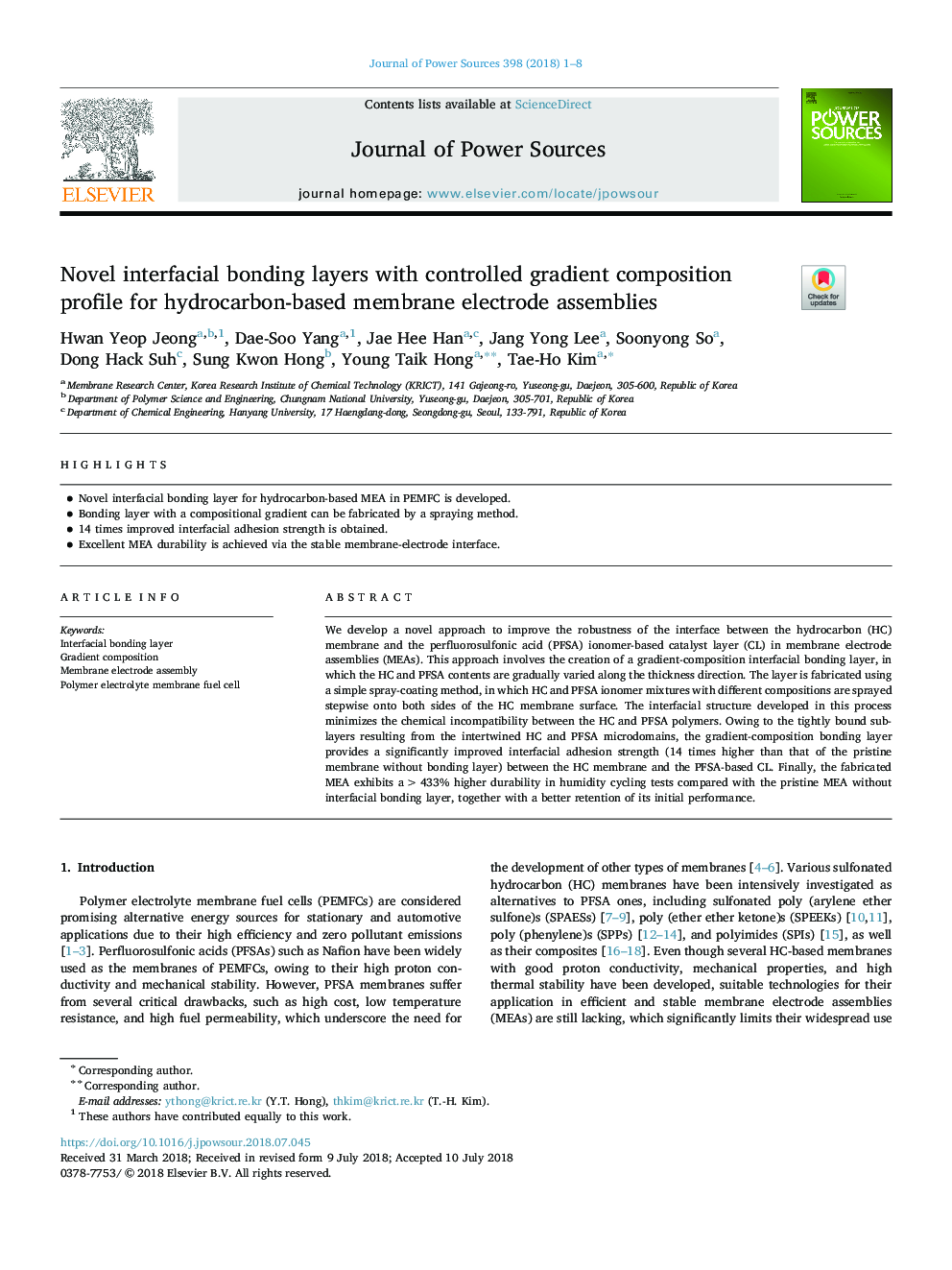| Article ID | Journal | Published Year | Pages | File Type |
|---|---|---|---|---|
| 7724707 | Journal of Power Sources | 2018 | 8 Pages |
Abstract
We develop a novel approach to improve the robustness of the interface between the hydrocarbon (HC) membrane and the perfluorosulfonic acid (PFSA) ionomer-based catalyst layer (CL) in membrane electrode assemblies (MEAs). This approach involves the creation of a gradient-composition interfacial bonding layer, in which the HC and PFSA contents are gradually varied along the thickness direction. The layer is fabricated using a simple spray-coating method, in which HC and PFSA ionomer mixtures with different compositions are sprayed stepwise onto both sides of the HC membrane surface. The interfacial structure developed in this process minimizes the chemical incompatibility between the HC and PFSA polymers. Owing to the tightly bound sublayers resulting from the intertwined HC and PFSA microdomains, the gradient-composition bonding layer provides a significantly improved interfacial adhesion strength (14 times higher than that of the pristine membrane without bonding layer) between the HC membrane and the PFSA-based CL. Finally, the fabricated MEA exhibits a >433% higher durability in humidity cycling tests compared with the pristine MEA without interfacial bonding layer, together with a better retention of its initial performance.
Related Topics
Physical Sciences and Engineering
Chemistry
Electrochemistry
Authors
Hwan Yeop Jeong, Dae-Soo Yang, Jae Hee Han, Jang Yong Lee, Soonyong So, Dong Hack Suh, Sung Kwon Hong, Young Taik Hong, Tae-Ho Kim,
